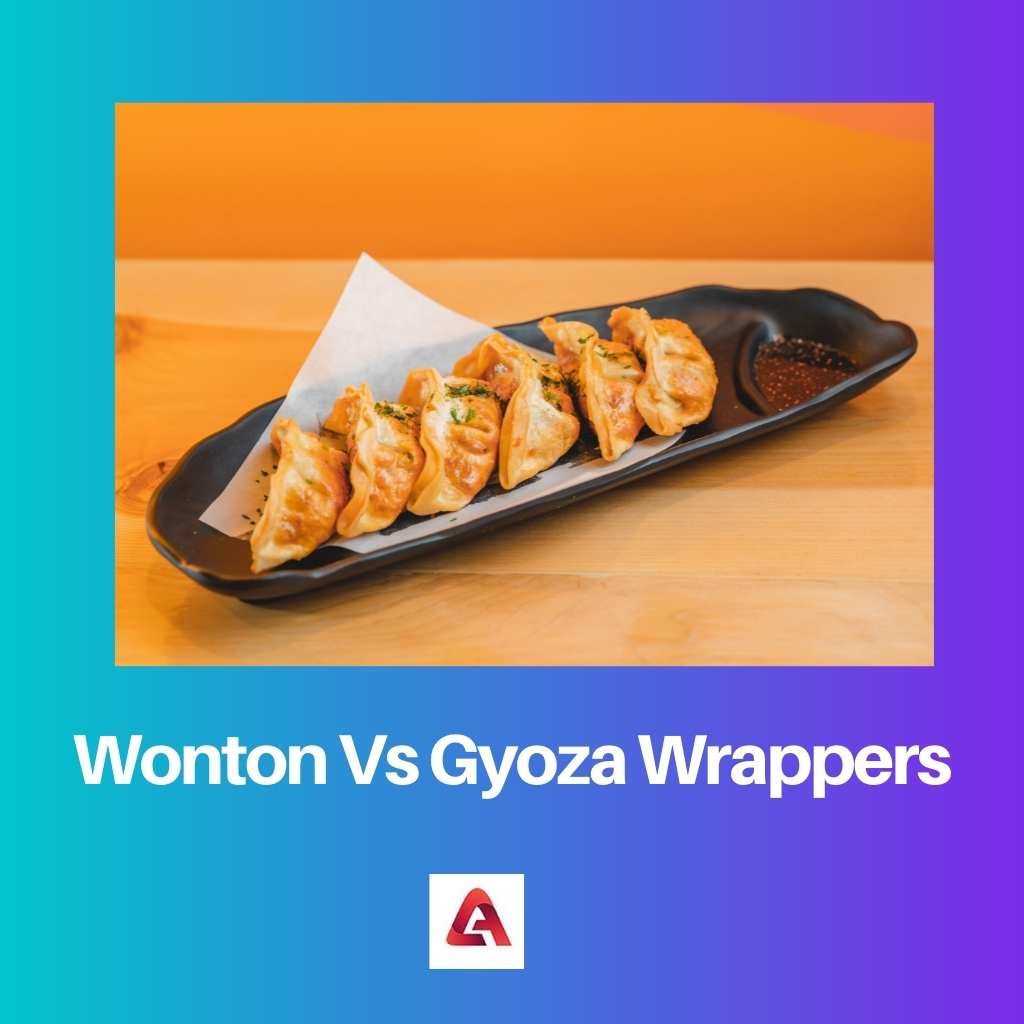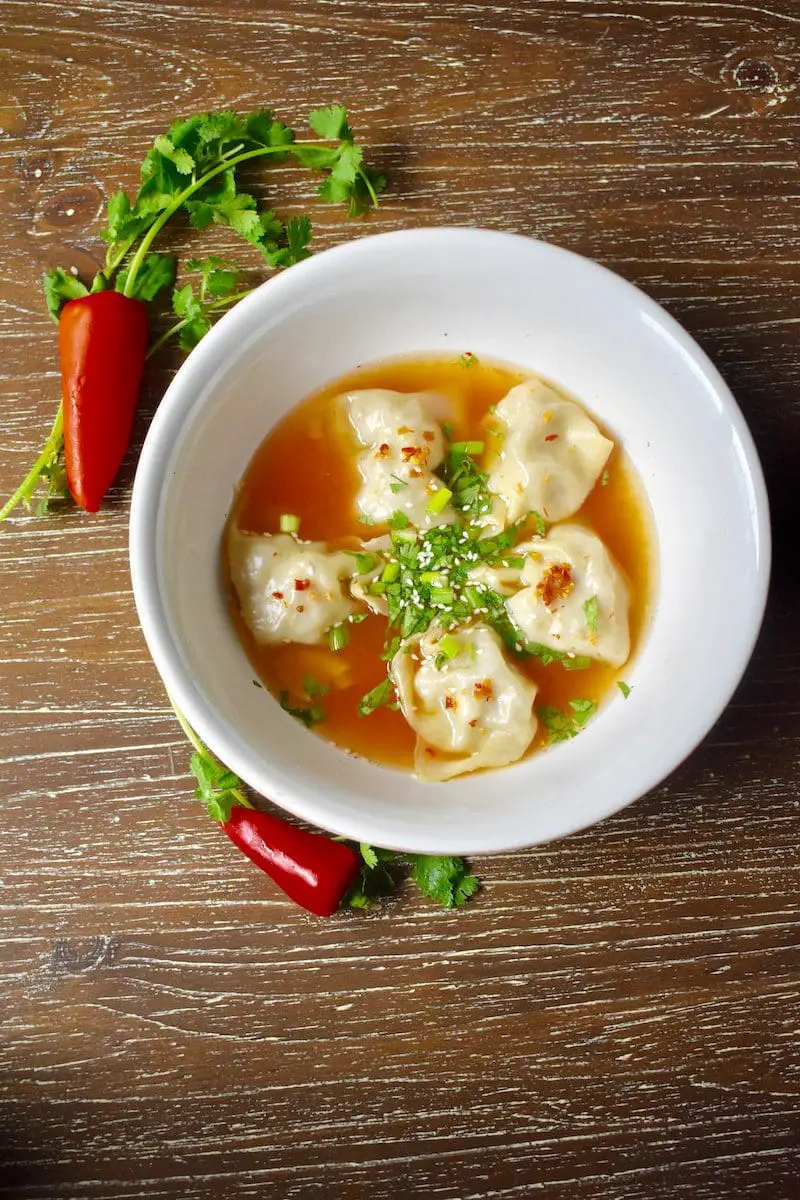The meal is an essence of different cultures and how their traditional food is created, as well as the importance of it.
Various locations or cultures have their distinct essence, taste, and diversity of cuisine, such as dumplings, which are appreciated and widely consumed, and wonton and gyoza wrappers, which add to the delectability of these dumplings.
Key Takeaways
- Wonton wrappers are thinner and smoother than gyoza wrappers, which are thicker and rougher in texture.
- Wonton wrappers are used for steamed or boiled dumplings, while gyoza wrappers are used for pan-fried or deep-fried dumplings.
- Wonton wrappers are more commonly used in Chinese cuisine, while gyoza wrappers are used in Japanese cuisine.
Wonton Vs Gyoza Wrappers
Wonton wrappers are square-shaped with delicate textures used in Chinese cuisine, made from wheat flour, water, and egg. Gyoza wrappers are used in Japanese cuisine and are made from wheat flour, water, and salt. They are round in shape and have a slightly thicker texture than wonton wrappers.

Wontons are a sort of Chinese dumpling, however, unlike potstickers, wontons are normally made with a separate batter, have a much more curled form, and are consumed in soup.
The shrimp-filled wontons one is thoroughly familiar with are Hong Kong-style, and they’re eaten in soup.
Some claim that wontons are simply cooked potstickers, so there isn’t a clear difference between the two.
Gyoza is the Japanese equivalent of potstickers, although they have a much more regular structure (long and thin) with a considerably thinner outer layer.
Sui-gyoza is a boiling variant of gyoza. They’re created with wheat flour, salt, and olive oil.
The Japanese gyoza wrapper is much thinner than the Chinese one.
Comparison Table
| Parameters of Comparison | Wonton | Gyoza Wrappers |
|---|---|---|
| Definition | Wonton wrappers are wheat flour-based Chinese dumpling wrappers. | Gyoza wrapper is a wheat flour-based Japanese dumpling wrapper. |
| Originated | Northern China is where wonton originated. | Gyoza wrappers developed in Northern China and were later transformed into their variant by the Japanese. |
| Made Of | Eggs, wheat flour, water, and salt are used to make wontons. | Oil, wheat flour, water, and salt are used to make gyoza wrappers. |
| Structure | Wonton has a thicker and bigger structure, a square form, and a thicker center. | Gyoza wrappers are thinner and small in structure, with a circular form, and the filling were finer. |
| Eaten As | Chinese dumplings covered in Wonton wrappers are deep-fried, pan-fried, or steamed. | Japanese Gyoza dumplings can be eaten in a range of methods, including cooked, steamed, or fried with a dipping sauce. |
What Is Wonton?
Wonton wrappers are Chinese dumpling wrappers that are made with refined wheat batter, eggs, salt, and liquid.
Wonton wrappers are tiny slices of meat, veggies, or shellfish that can be packed.
These delicious Chinese dumplings covered in Wonton wrappers can be pan-fried or deep-fried, or they can be added to stews.
Additionally, the wonton wrapper is fairly thin, flavored nice and smooth, and may be used in place of many other dumpling wrappers.
However, because they come in a standard size, they should be cut into circles if used with other Chinese dumpling fillings.
Wonton, like dumplings and dim sum, is a versatile meal. To prepare unique recipes, fill the triangle wrapper with non-traditional wonton fillings.
The Chinese delicacy could be utilized in a variety of recipes, and it is simple to prepare for home chefs.
Wonton wrappers are just egg noodles cut into quarters. Wonton wrappers are produced very thin for usage in wonton soup and thicker for frying wontons.
To make the wrappers, mix a dough from egg yolk, flour, and water, spread it out, and slice it into four-inch squares.
When piled, handmade wonton wrappers may cling together, so dust with cornstarch to keep them apart.

What Is Gyoza Wrappers?
Gyoza wrappers are made from white dough made from wheat flour, salt, and oil that is wrapped around our selection of meat, fish, or vegetable content.
Because Japanese Gyoza wrappers are slimmer than Chinese Wonton wrappers, purchasing Japanese Gyoza wrappers at local grocers can be inconvenient.
Furthermore, the Japanese adopted the Northern Chinese process for creating the Gyoza wrapper.
Gyoza wrappers are finer, shorter, and slimmer than Chinese dumpling wrappers.
Because the lightweight and daintiness of the wrapper can easily lead the dumpling to rip or break if stuffed with a hefty filling, the filling within the Gyoza wrapper is likewise finer than the contents of Chinese dumplings.
In the matter of taste, there’s no difference between gyoza wrappers bought from a store and homemade gyoza wrappers.
Gyoza wrappers are spherical and have a diameter of roughly 7 cm. A wider gyoza wrapper, roughly 10 cm in diameter, is also available.
They are 0.8mm–1.5mm thick, making them bigger than typical dumpling wrappers.
The width and size of the gyoza change based on the producer and shop. The wrappers of simmered gyoza are larger than those of grilled gyoza.
To get a lovely and chewy texture, boiled gyoza are occasionally cooked with only bread flour rather than cake flour.

Main Differences Between Wonton and Gyoza Wrappers
- Wonton wrappers are Chinese dumpling wrappers made from wheat flour, whereas gyoza wrappers are Japanese dumpling wrappers made from wheat flour.
- Wontons developed in Northern China, whereas gyoza wrappers evolved in Northern China and then were later converted into their variety by the Japanese.
- Wontons are prepared with eggs, wheat flour, water, and salt, while gyoza wrappers are made with oil, wheat flour, water, and salt.
- Wonton wrappers are thicker and larger in construction, with a square form and a thicker center, whereas gyoza wrappers are thinner and smaller in framework, with a circular form, and the filling is finer since the wrapper is delicate.
- Chinese dumplings wrapped in wonton sheets are commonly deep-fried, pan-fried, or steamed, but Japanese Gyoza dumplings can be boiled, sauteed, or fried with a serving sauce.

